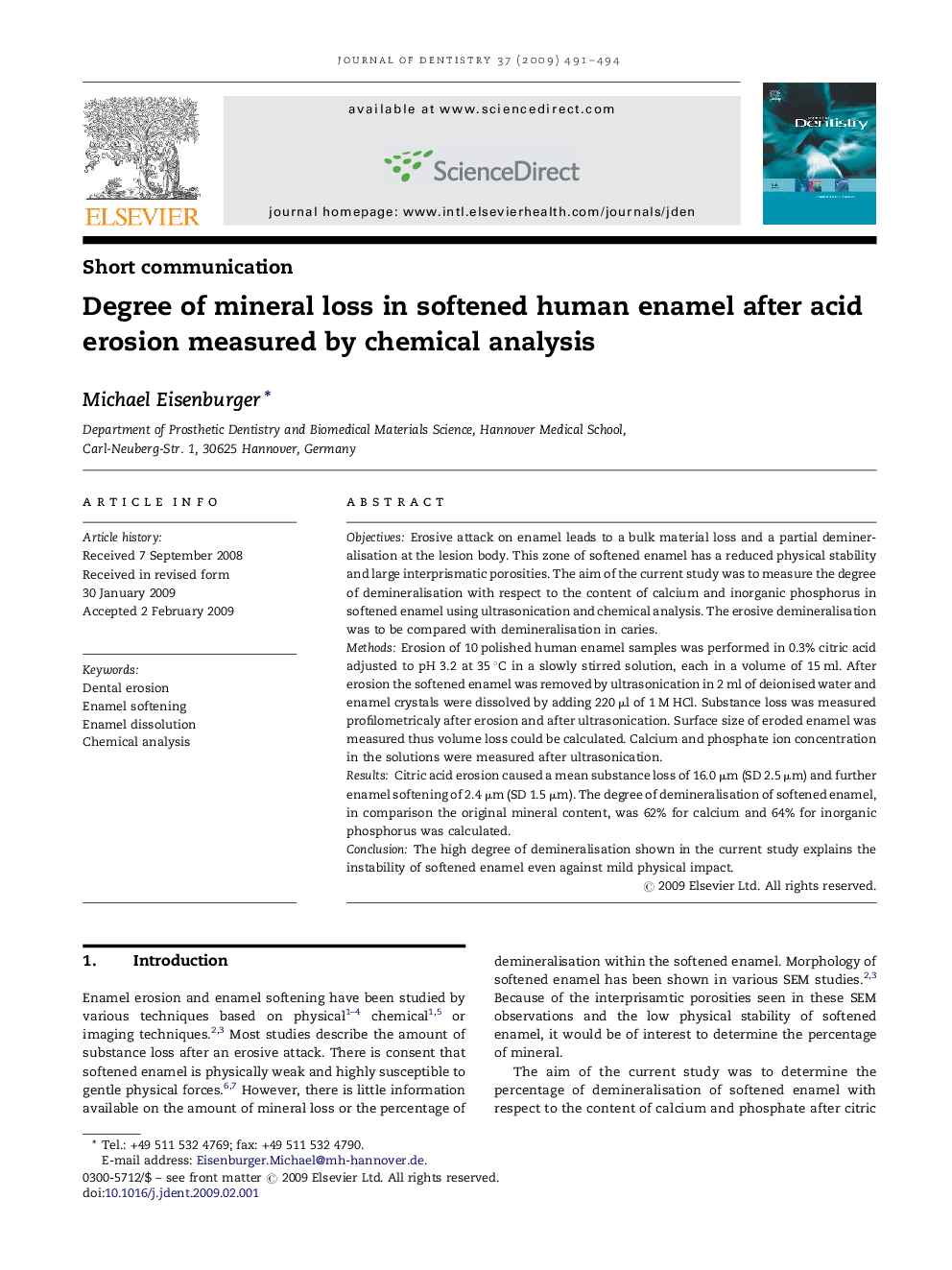| Article ID | Journal | Published Year | Pages | File Type |
|---|---|---|---|---|
| 3145361 | Journal of Dentistry | 2009 | 4 Pages |
ObjectivesErosive attack on enamel leads to a bulk material loss and a partial demineralisation at the lesion body. This zone of softened enamel has a reduced physical stability and large interprismatic porosities. The aim of the current study was to measure the degree of demineralisation with respect to the content of calcium and inorganic phosphorus in softened enamel using ultrasonication and chemical analysis. The erosive demineralisation was to be compared with demineralisation in caries.MethodsErosion of 10 polished human enamel samples was performed in 0.3% citric acid adjusted to pH 3.2 at 35 °C in a slowly stirred solution, each in a volume of 15 ml. After erosion the softened enamel was removed by ultrasonication in 2 ml of deionised water and enamel crystals were dissolved by adding 220 μl of 1 M HCl. Substance loss was measured profilometricaly after erosion and after ultrasonication. Surface size of eroded enamel was measured thus volume loss could be calculated. Calcium and phosphate ion concentration in the solutions were measured after ultrasonication.ResultsCitric acid erosion caused a mean substance loss of 16.0 μm (SD 2.5 μm) and further enamel softening of 2.4 μm (SD 1.5 μm). The degree of demineralisation of softened enamel, in comparison the original mineral content, was 62% for calcium and 64% for inorganic phosphorus was calculated.ConclusionThe high degree of demineralisation shown in the current study explains the instability of softened enamel even against mild physical impact.
